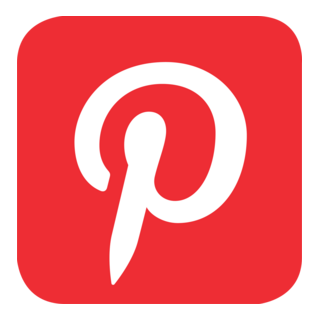Pinterest has become more than just a virtual mood board—it’s now a platform where creators, entrepreneurs, and content marketers build brand visibility, drive traffic, and grow their businesses. But as Pinterest continues to grow, so does its advertising presence. Promoted Pins, video ads, and auto-play banners are now a common part of the browsing experience.
If you’re a Pinterest power user—someone who spends hours curating, researching, or managing multiple accounts—you may have wondered: Is it time to invest in Ad Block Premium? Will it improve your workflow or help you stay focused?
In this article, we’ll explore what Ad Block Premium is, how it affects the Pinterest experience, and whether it’s worth the investment for power users who rely on the platform for more than casual pinning.
What Is Ad Block Premium?
Ad Block Premium is the paid version of popular ad-blocking browser extensions like AdBlock and AdBlock Plus. These tools are designed to block intrusive ads on websites, including social media platforms and search engines. While the free versions offer basic protection, the premium versions typically include:
- Enhanced ad-blocking capabilities (especially for video and pop-up ads)
- Custom whitelisting or blocking of specific elements
- Faster load times
- Improved privacy features (like anti-tracking)
- Priority support
Essentially, Ad Block Premium is tailored for users who want a smoother, cleaner browsing experience without distractions.
How Ads Affect the Pinterest Experience
Ads on Pinterest aren’t as aggressive as pop-ups or autoplay videos on other platforms, but they’re becoming more prevalent. Promoted Pins often appear natively in search results and home feeds, making them hard to distinguish from organic content.
Here’s how ads can impact the Pinterest experience:
- Distraction from organic Pins: Sponsored Pins may not always be relevant to your interests, especially when browsing niche topics.
- Slower load times: Rich media ads (like videos) can slow down your feed, especially on mobile or lower bandwidth connections.
- Cluttered user interface: Too many ads in the scroll can reduce the effectiveness of keyword-based searches or visual discovery.
- Misleading content: Some promoted Pins look click-worthy but lead to unrelated or low-quality landing pages.
For casual users, this may not be a dealbreaker. But for power users who rely on Pinterest for serious content planning, marketing, or sourcing, ads can be an obstacle to productivity.
What Ad Block Premium Can (and Can’t) Do on Pinterest
Let’s break down what Ad Block Premium can offer Pinterest users—and where it might fall short.
✅ What It Can Do:
- Block Promoted Pins: Ad Block Premium can hide most (though not all) sponsored Pins from your feed and search results.
- Improve Speed: With fewer ads loading, your Pinterest feed and boards may load faster—especially useful when managing large volumes of content.
- Reduce Clutter: Cleaner feeds mean fewer distractions while planning your own Pins or curating boards for clients.
- Increase Focus: Without promotional interruptions, users may find it easier to stay focused on content strategy or content discovery.
❌ What It Can’t Do:
- Bypass Pinterest’s internal tools: Ad blockers won’t change how Pinterest ranks Pins, shows suggested content, or displays Idea Pins.
- Remove all ads 100%: Some ads, especially those embedded into Pinterest’s backend (like native video ads), may still appear occasionally.
- Work on mobile apps: Most ad blockers, including premium versions, are browser-based and don’t function within Pinterest’s mobile app unless you’re browsing via mobile web with an extension-enabled browser.
So, while Ad Block Premium isn’t perfect, it does remove most ad-related friction for desktop users who are heavily engaged with the platform.
When Ad Block Premium Makes Sense for Pinterest Users
If you use Pinterest occasionally to save recipes or design ideas, the free version of an ad blocker (or even no blocker at all) is probably sufficient.
However, if you fall into any of the categories below, Ad Block Premium may be worth the investment:
✅ Pinterest Power Users:
If you use Pinterest for:
- Daily content scheduling
- Running multiple business or client accounts
- Pinning for SEO or affiliate marketing
- Trend research or product sourcing
…then removing distractions can significantly improve efficiency and cut down on noise.
✅ Bloggers & Digital Marketers:
Those using Pinterest as a primary traffic source may want a cleaner search environment to analyze trends and competitor content without ad interference.
✅ Designers & Creatives:
A less cluttered interface helps visual thinkers focus on aesthetics, layout, and inspiration without getting sidetracked.
Cost vs. Benefit Analysis
Most Ad Block Premium tools cost between $2 to $5 per month, or offer lifetime licenses for around $25 to $50. For many professionals, that’s a small price to pay for a better workflow.
Here’s a simple comparison:
| Feature | Without Ad Block | With Ad Block Premium |
| Promoted Pins | Visible and mixed with content | Mostly hidden |
| Feed Clarity | Moderate | High |
| Productivity | Interrupted by ads | More focused browsing |
| Value | Free | Paid, but targeted |
If Pinterest is a central part of your business strategy, Ad Block Premium can pay for itself in time saved and focus gained.
Final Verdict: Is It Worth It?
If you’re a Pinterest power user, the answer is: Yes, Ad Block Premium is likely worth it. It streamlines your experience, reduces distractions, and allows you to focus on what matters—creating, planning, and sharing great content.
While it won’t give you an unfair advantage in the algorithm or unlock secret features, it does remove barriers that slow down your workflow.
If you’re still unsure, try a free trial of a premium blocker or test the free version first. If you notice a major improvement in your Pinterest efficiency, it’s a sign that the upgrade is worth considering.
